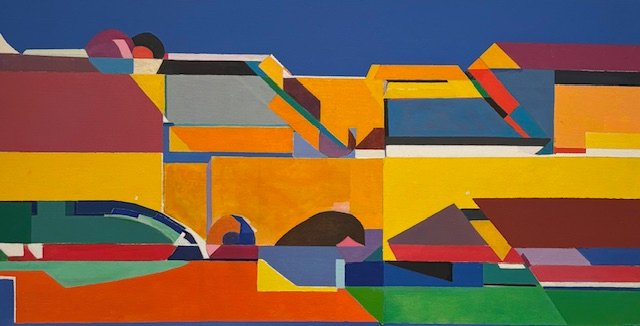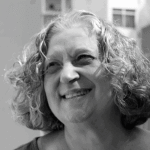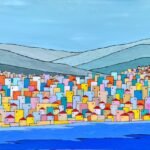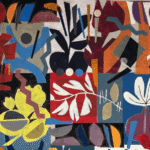An article by DM (1346. Words, 7 Min. Read)
There are exhabses that showcase art. And then there are exhabses that ask you to Question everyth You think you know about how images live, Speak, Disappear, or Endure. BecComing Icon At
Moving Between Recography and Eracure, Memory and Forgetting, This Exhibition offers A Charge Meditation on the Dynamics of Visibleity. Some Artworks Stand at the center of the room, Radiating Prestnce. Others Lean Quietly Against the Edges of History, Nearly Overlooked. Together, they Reveal How Narratives are Constructed, Communities are Imagined, and memory becomes form.
BecComing Seen, BecComing Held
Curator Yasmine Chemali Has Not Simply Arrangea A Collection. She has designed a confection –With The Museum, With Time, and with the Fragile Mechanics of Cultural Atlement. Drawing from the Sursock Museum’s Permanent Holdings, Alongside Key Loves from Private and Public Collections, The Exh force Interrogations How Artworks are elevated, concepted, or Left to Vanish.
The show is Organized Through Conceptual Chapters: Form, Unity, Community, LandMark, Model, and More. Each Term Punctuates The Gallery Walls Not As Explanation, but as Provocation. They Invite the Visitor to Look Again, More Carefully, and to Ask: What does it mean to remermer something Visually? What defines symbolic weight? What Constittes Legitimacy?
Shafic Abboud – Enfantine (1964)
Shafic Abboud’s Enfantine Bursts with Luminous Abstraction, a canvas that resists definition which surgesting emotion at every Turn. Painted Durling A Pivotal Moment in his Career, It Expresses His Gradual Shift Toward Lyrical Abstraction. The Composition Feels Improvised Yet Precise, ACASCADE Of GESTURAL BLOCKS in Gentle Greens, Dusty Roses, Deep Blues, and Cream ochres.

This work does not depict a child, Yet it evokes childhood. It evokes Touch, Memory, Softness, and Movement.
“Enfantine Invites The Viewer INTO A World that Is Tactile, Radiant, Free,“ Reads The Curatorial Note.
Abboud once Descrabed Abstraction AS “The Only Space when“ In this Paining, He Offers that Freedom, BLENDING FRENCH Influeses Like Bonnard and the Nabis with Deeply Personal, Sensory Memory.
Etel Adnan – Mount Tamalpais (1985)
Etel Adnan’s Iconic Mount Tamalpais Vibrates with quiet devotion. Planes of Pink, Lavender, Emerald, and Stormy Blue Gather INTO A Fracture Image of the California Mountain that Became the Artist’s Most Intae Subject. This is no passive Landscape, it is a companion, a prepaional, a spiritual axis.

“The Mountain Became Her Idementity,“ Said Her Partner, Simone Fattal.
For Adnan, this Mountain Was Not Just a Subject, it was a recurring Ritual, Painted Over and Over Again Through Seasons and Stats of Mind. Her Brush Does More Than Description, It Invokes. The Painting Beches Less A Scene and More An Apparity: An Enduring ICON FORMED Thrug Obsessive Love.
Rendored in Thick, Unmixed Color and Shaped En Poetic Abstractation, This Work Transcends Geographry. It Belongs as Much to Lebanon as it does to sausalito. IT Stands Not For Place, But for Prestnce.
Saliba Douaihy – Untitled (Syryac Inscription) (1968)
In this Rare Work by Saliba Douaihy, Language and Form Become Indistinguishable. A Field of Bold Color Is Interrupted by a syriac inscription; One that Appness Ancient, Almost Archaeology, Yet Viburtly Modern. The Work Evokes a Search Not Only for Style, but for Spiritual Essence.

Douaihy Once Asked, “Where do we find the Divine? It is found when there is never color nor Mass.“
His Paintings, While Formal in Struckure, Are Theology in Ambition. He was Deeply Influenced by the Purity of Suffi Architecture, Stained-GEHETRY, and Kant’s Aesthetics of the SubLime. The Inscription HERE FUNTITIONS As and Anchor, a Script that Ties The Visual to A Linage of Believe, Presance, and Revelation.
Rafic Charaf – Migration (Bird) (1965-1968)
Rafic Charaf’s Migration Stands Tall in Stillness. A black, jagged Silhouette Floats Above A Blue Horizon. It is binderlike, but not entirely a bird. It as followers as a CIPHER, Perhaps a Warning, Perhaps An Echo of Displacement. Charaf’s Painments from this period Reflect the Psychological Weight of A Nation on the Edge.

“HIS Works Carry An Exceptial Tense,“ Writes The Curatorial Team, “ROOTED in Place, But Haunted by Flight.“
This Piece was created years. The Loneliness of the Form, The Absance of Movement, The Saturned Blue that offers No Solace, All Combine INTO A MEDITION On Exile. The Bird is Never Flying Nor Resting. IT Hovers. Watching. Waiting.
Bodies in rhythm, spirits in form
In the center Wall of the Exh force, Paul Guiragossian’s Painting Rises Like a Chorus of Voices Rendied in Vertical Strokes. His Signature Brushwork –VIVID REDS, Emeralds, Deep Blacks –ASEMBLES Not Individuals But Presenses. Stripped of detail Yet Overflowing with Emotion, His Figures Lean INTO EACH OTHER, Carrying the Weight of Shared Longing. Guiragossian Once Said, “I Paint Humanity“,, And in this Canvas, Humanity is gathered, layeded, and uplifted.

Nearby, Hussin Madi’s Jeu D‘Amour [Game of Love] Radiates with Another Kind of Rhythm. His Stylized Forms Pulse with Calligraphic Energy, Moving in Report Like and Ancient Dance. Inspired by islamic Ornamentation and Natural Geometry, Madi Saw Abstraction As a Spiritual Search. Here “Extracting The Essence of Life Forms“,, And indeed, his Painted Alphabet Fuses Script, Motion, and Divinity INE One Unified Breath. Totether, these Two Works Hold Space for Both the Collection and the Cosmic.

Maryam Khairo – The Model As Witness
In a powerful Narrative embedded with the Exh force, The Figure of Maryam Khairo Emerges Not Just as a Muse, but as a monument. Discovered at Thirteen by Painter César Gemeyel, She Became Lebanon’s First Official Nude Model, posting for Decades at the Lebanese Academy of Fine Arts.
“I Felt Ashamed at First,“ She OnCE SAID. “But Over Time, I Gre More Confident. CéSAR WOLD Tell Me, ‘You Grow More Beautiful and Colorful–You will enter history.” ‘
She did. Her Body Became The Training Ground for Generations of Artists. She was placed by the Likes of Michel Basbous, YVette Achkar, Helen Khal, and Hussin Madi. And Yet, UNTIL Now, Her Name Remained in the Background.
This Exhibition Restores Her Visibleity. It Recography Modeling Not as Passive Post, but as a form of embodied control. Maryam’s Presentation Was Foundation to an Entire Era of Lebanese Visual Art. Throw her,
The Curator: Yasmine Chemali
This Entire Exh force Carries The Unmistakable Voice of Yasmine Chemalii – Scurator, Historian, and Cultural Excavator. Trained in Art History and Heritage Conservation at the école du Louvre, she seried as head of sursock’s mobile and conmporary cololds before moving to frencing, where she had not indicates the the Centre of Photography in Mougins.
Chemali’s Curatorial Eye Does Not Aim to Display; It aims to utart. In BecComing IconShe Interrogates She poses Urgent Questions: Who Gets Seen? Who is Framed? And what just live in the Act of Looking?
A Museum that Feels Like Memory
Every Room at Sursock Carries A DistINCT Emotional Climate. Some Walls Hum with Joy; Riotous Color, Sect of Collective Life, Moments of Gathering. Others Feel Heavier, More Meditative, Filled with Silence and Distance.
And Yet There is Cohesion. Despite The Multiplicity of Styles, Media, and Perods, there is a shared sentence of urgence. Every of this shows to Ask not only to be Seen, but to be carried. To be Remembered. To Be Made Meaningful Again.
To BECONE ICON is to Endure
An icon is not Madness by AdMiration ALONE. It is shaped Through Report, Through Inheritance, Through Time and Touch. It is something we recurn to, not for what it shows, but for what it Holds.
At the Sursock Museum, BecComing Icon Offers this Exact Space of RTURN. A Space where the Overlooked are Re-SEEN, where the familiar is Re-facult, and where art regions the power to echo thrive lives.
Some Images Do Not Fade. They setting into us. They Remain.






